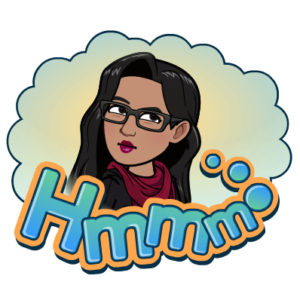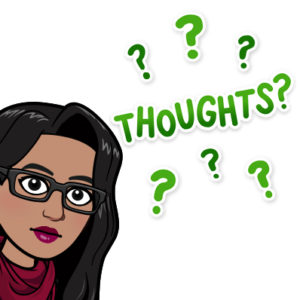For my Multimedia Response #2, I decided to read Digital Redlining, Access, and Privacy by Chris Gilliard and listen to the Ed 322 Oct 12 class conversation involving him. I decided to do a Twitter Essay even though originally I was intrigued by the prospect of using a sketch note because as soon as I read this article, I really connected with it and had several ideas swirling in my head about what imagery I could use. But alas, due to my inability to access (wink wink) pencil crayons, I had to abandon that idea. The runner-up was doing a Twitter Essay since I really enjoyed tweeting during our open hashtag chat last week. At first, I wasn’t really sure what a twitter essay was but when I did some research (clicked on the links provided by Bonnie), I saw this was something doable for my skill level (not very). I was also really excited because it looked more straightforward than the Piktochart I did last time (after the Powtoon debacle). But little did I know, it would take me three times as long as the last response took. Who would’ve thought!?
Now, a little about me. I’m chatty. Basically run my mouth a little too much chatty. Also, I like seeing my thoughts together on one paper so I can see them right there. With Twitter, after I was done with one tweet, there was scrolling and checking and multiple pieces involved….it just broke up the flow for me. Also parsing my thoughts down into 140 characters and then doing that about 21 times was…. horrendous. I struggled. Not to say it wasn’t a learning process. It was. I learned a lot.
I think I started out strong. (Check out my essay by clicking the image below!)
1. Having access to the internet has unlocked a whole new level and ability to access information. But have we really gained access? Are we ALL free to explore any topic under the sun? Or are there still things standing in our way?
What do you think? #UWinDig— Miss Mor (@MissMor7) October 31, 2018
A question that asks the audience to interact with the tweet and maybe pulls them in so they feel inspired to read the rest. But I think about halfway through the 21 tweets, I lost my way. It was really hard to keep my thinking linear so that each subsequent tweet followed the ideas of the one that came before. And yet, I don’t normally struggle with this process when writing an essay on a normal paper.
I think overall, I learned a lot about my quirks as a writer and my own thinking process. And definitely how involved tweeting is. I have a new respect for people who do this every day to raise awareness about various issues. My favourite thing I would have to say was using Gifs, polls and making my own images. I feel like that made it much more interactive for both the reader and for me than a simple paper and pen essay would have been.
Would I do it again? I don’t know. In any case, this is a skill that I will need to work on some more to formulate my final opinion of whether it is for me or not.

Now, on to the actual article and class chat. The premise of both was the concept of redlining and how it is evident nowadays in the digital world. Access to the internet and web resources is not a given for everyone. First, there are those students that for whatever reason, don’t have access to the internet. And then there are those students that have limited access. The limits are placed on them by “Acceptable Use Policies” that are enforced by all educational institutions to some degree (some more than others). According to Chris Gilliard, colleges enforce them to the degree where students are unable to access a lot of information whereas if students at a university tried to look up the same resources, they would be able to access them. This applies to peer-to-peer communication tools (blogs etc) and participatory learning tools (phone, Ipads etc) as well. This limit is obviously detrimental to those students because it means they become less competitive when they get to the workforce.
It was eye-opening to read this article. To be honest I had never even thought about how the privilege of going to a research-based institution affected my ability to get my hands on all sorts of research. I don’t think I’ve ever come across any “blockages” that stopped me from gaining access to anything I needed in all of my university career. I guess this was a situation of “you don’t know what you don’t know”.
I definitely agreed with Chris on the reasons why he thinks that this “digital redlining is not recognized as a post-secondary problem.” I relate to reasons 1 and 2 most strongly because they say that universities usually have an open environment towards learning and the socio-economic status in universities is such that, most students have outside access to web resources than just what is provided by the school (ex. phones etc)
To that end, now that I know about the issues, I will be much more critical about the policies put in place by the schools and boards that I work for. And try my best to make sure all my students have equal opportunities for accessing the information they want or need. This could be through providing them with printed resources (although this could introduce my own bias) and making sure they have time in the school library after school or at lunch to research for projects.
Overall, I agreed with the ideas presented in both the article and the class chat. They have both given me some food for thought and I hope to apply everything I have learned here to my own teaching practice.
Thanks for reading! (sorry it’s a lot)
Bharti


